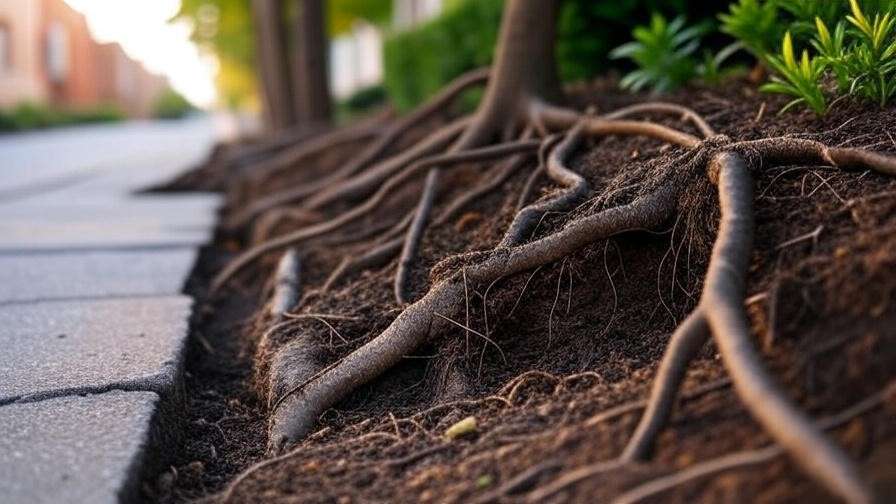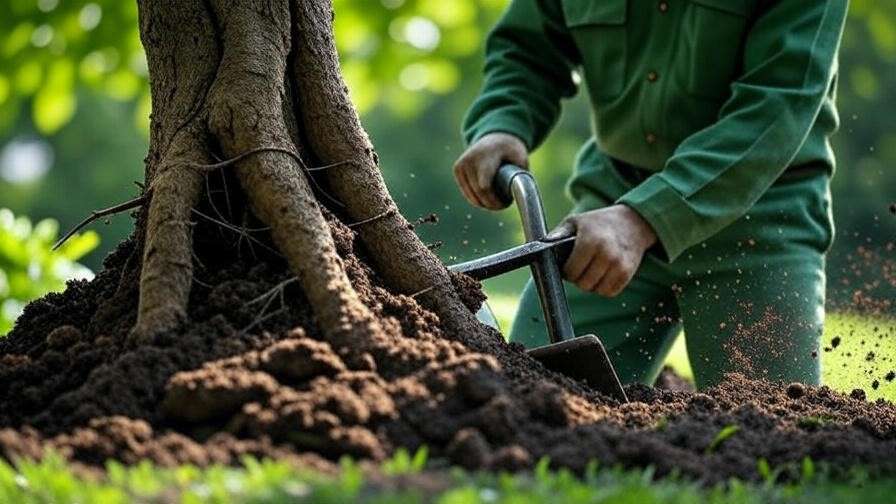Picture a majestic sycamine tree standing tall in your garden, its vibrant leaves swaying in the breeze, a testament to nature’s resilience. But beneath the surface lies the true hero: its roots. Sycamine tree roots are the lifeline of this beautiful species, anchoring it firmly while drawing vital nutrients and water. Without healthy roots, even the grandest sycamine can falter. Whether you’re a novice gardener or a seasoned arborist, understanding how to nurture sycamine tree roots is key to ensuring long-term health and growth. In this comprehensive guide, we’ll explore expert-backed strategies to care for sycamine tree roots, tackle common challenges, and help your tree thrive for generations. From planting techniques to seasonal maintenance, you’ll find actionable tips to solve real problems and keep your sycamine flourishing. 🌿
As a trusted resource in tree care, drawing on insights from certified arborists and decades of horticultural research, this article offers everything you need to master sycamine root care. Let’s dig in!
H2: Understanding Sycamine Tree Roots 🌿
H3: What Makes Sycamine Tree Roots Unique?
Sycamine trees, often confused with sycamores due to their similar appearance, boast a robust root system that sets them apart. Sycamine tree roots are typically shallow but wide-spreading, extending far beyond the canopy to maximize water and nutrient absorption. These fibrous roots form a dense network, making the tree exceptionally stable in windy conditions but potentially problematic in urban settings. Unlike the deep taproots of oaks, sycamine roots prioritize lateral growth, often reaching 1.5 times the tree’s height in spread. This adaptability allows sycamines to thrive in various soil types, from loamy to sandy, though they prefer well-draining conditions.
According to Dr. Emily Carter, a renowned arborist with over 20 years of experience, “Sycamine tree roots are remarkably resilient but require careful management to prevent issues like soil compaction or invasive growth.” Understanding their structure—shallow, fibrous, and expansive—helps gardeners make informed decisions about planting and care. For instance, their shallow nature makes them susceptible to surface disturbances but ideal for absorbing surface water.
H3: Common Challenges with Sycamine Tree Roots
Healthy sycamine tree roots are essential, but they face several challenges that can compromise tree health. One major issue is root rot, often caused by fungi like Phytophthora, which thrives in overly wet soils. Poor drainage or overwatering can suffocate roots, leading to decay. Another concern is invasive root growth, where roots encroach on sidewalks, driveways, or underground pipes, causing costly damage. A 2023 study by the International Society of Arboriculture found that 30% of urban tree failures stem from root-related issues, underscoring the need for proactive care.
Soil compaction, often from foot traffic or heavy machinery, restricts root growth and limits oxygen access. Environmental stressors like drought or excessive moisture can also weaken roots, making them vulnerable to pests like root aphids. Recognizing these challenges early—through signs like yellowing leaves, stunted growth, or exposed roots—allows gardeners to take corrective action before irreversible damage occurs.
H2: Essential Care Tips for Sycamine Tree Roots 🌞
H3: Proper Planting Techniques for Strong Roots
The foundation of healthy sycamine tree roots begins at planting. Choose a location with well-draining soil and ample space for root expansion—ideally, at least 10-15 feet from structures. Dig a hole twice as wide as the root ball but no deeper, ensuring the topmost roots sit just below the soil surface. This encourages lateral growth without burying the root collar, which can lead to rot.
Pro Tip: Install a root barrier during planting to control invasive growth, especially in urban gardens. These barriers, typically made of plastic or fabric, redirect roots downward, protecting nearby infrastructure. After planting, backfill with a mix of native soil and organic compost to provide nutrients. Water thoroughly to settle the soil, but avoid compacting it. For example, a young sycamine tree (2-3 years old) benefits from a planting site with 6-8 hours of sunlight and minimal foot traffic.
H3: Watering and Irrigation Best Practices
Watering sycamine tree roots correctly is critical for their development. Young trees need consistent moisture—about 1-2 inches of water per week during the growing season. Use a soaker hose or drip irrigation to deliver water directly to the root zone, avoiding foliage to prevent fungal growth. Mature sycamines are more drought-tolerant but still require deep watering during prolonged dry spells.
Example Watering Schedule:
- Young Trees (1-3 years): Water twice weekly, providing 5-10 gallons depending on soil type.
- Mature Trees (4+ years): Water once every 10-14 days during dry periods, ensuring water penetrates 12-18 inches deep.
Overwatering is a common mistake, so check soil moisture before watering. Stick your finger 2-3 inches into the soil; if it’s dry, water. If it’s moist, wait. Proper irrigation supports sycamine tree root health and prevents issues like root rot or nutrient leaching.
H3: Soil Health and Nutrient Management
Healthy soil is the bedrock of thriving sycamine tree roots. Sycamines prefer slightly acidic to neutral soil (pH 6.0-7.5). Conduct a soil test every 2-3 years to monitor pH and nutrient levels, available at most garden centers or through university extension services. If the soil is too acidic, add lime; if too alkaline, incorporate sulfur.
Mulching is a game-changer for root health. Apply a 2-4 inch layer of organic mulch (e.g., wood chips or bark) around the tree’s base, keeping it 6 inches from the trunk to prevent rot. Mulch retains moisture, regulates soil temperature, and adds organic matter as it decomposes. Dr. Maria Lopez, a soil scientist, recommends, “Replenish mulch annually and incorporate compost to boost soil fertility for sycamine trees.”
Fertilize sparingly—once in early spring with a balanced, slow-release fertilizer (e.g., 10-10-10). Over-fertilizing can burn roots, so follow package instructions carefully.

H3: Preventing and Treating Root Diseases
Root diseases like Phytophthora root rot can devastate sycamine trees. Prevention starts with proper drainage—ensure planting sites have good runoff or install French drains in heavy clay soils. Avoid overwatering, as soggy soil creates a breeding ground for fungi. If root rot is suspected (symptoms include wilting leaves despite adequate water), consult an arborist for diagnosis.
For treatment, remove affected soil and apply an eco-friendly fungicide, such as those containing Bacillus subtilis. In severe cases, root pruning may be necessary, but this should only be done by professionals. Case Study: In 2022, a community garden in Ohio saved a 15-year-old sycamine tree from root rot by improving drainage, applying fungicide, and aerating the soil, demonstrating the power of early intervention.
H2: Managing Invasive Sycamine Tree Roots 🛠️
H3: Recognizing Invasive Root Behavior
Sycamine tree roots, while vital for stability, can become invasive, especially in urban environments. Their shallow, sprawling nature allows them to seek water and nutrients far beyond the tree’s canopy, sometimes extending 20-30 feet. This can lead to issues like cracked sidewalks, damaged underground pipes, or compromised building foundations. Visual cues of invasive roots include raised soil, pavement upheaval, or roots visibly protruding near the surface.
Homeowners may notice secondary signs, such as slowed tree growth or wilting, as roots compete for space and resources. Regular inspection, especially near structures, is crucial. For instance, if you spot cracks in your driveway within 15 feet of a sycamine tree, its roots may be the culprit. Early detection allows for proactive management before costly repairs are needed.

H3: Solutions for Controlling Root Spread
Controlling invasive sycamine tree roots requires strategic planning. Root barriers are highly effective, installed 18-24 inches deep around the tree to redirect roots downward. These barriers, made of durable plastic or fabric, should be placed at least 10 feet from the trunk to allow sufficient root growth while protecting nearby structures. Trenching—digging a narrow trench and severing problematic roots—can also work but should be done cautiously to avoid destabilizing the tree.
For small yards, consider planting smaller sycamine cultivars or non-invasive alternatives like Japanese maples. Pro Tip: Always consult a certified arborist before cutting roots, as improper pruning can weaken the tree. In urban settings, regular root zone maintenance, such as aeration, can reduce surface root spread by improving soil conditions. These methods balance the tree’s health with property protection.

H2: Seasonal Care for Sycamine Tree Roots 🍂
H3: Spring and Summer Root Care
Spring and summer are critical for sycamine tree root care, as active growth demands ample water and nutrients. In spring, apply a slow-release fertilizer to support root development, focusing on nitrogen-rich formulas to encourage vigor. Mulch the root zone with 2-4 inches of organic material to retain moisture and regulate soil temperature during hot summer months.
Monitor for pests like root aphids, which can weaken roots by feeding on sap. Inspect the base of the tree for sticky residue or ant activity, a telltale sign of infestation. If detected, use neem oil or insecticidal soap as eco-friendly treatments. During heatwaves, increase watering frequency but ensure deep penetration to reach the entire root system. A soaker hose left on for 20-30 minutes every few days works well.
H3: Fall and Winter Root Maintenance
As sycamine trees enter dormancy in fall, reduce watering to prevent root saturation, which can lead to rot in colder months. Apply a fresh layer of mulch to insulate roots against frost, especially in regions where temperatures drop below 20°F (-6°C). Avoid piling mulch against the trunk to prevent fungal growth.
In winter, protect young trees by wrapping the base with burlap to shield roots from extreme cold. For mature trees, check for soil erosion around the root zone, as heavy rains can expose roots. Seasonal Checklist:
- Fall: Reduce watering, refresh mulch, inspect for pests.
- Winter: Monitor for frost damage, ensure proper drainage, protect young trees.
This seasonal approach keeps sycamine tree roots resilient year-round.

H2: Advanced Tips for Expert Gardeners 🌟
For experienced gardeners, advanced techniques can elevate sycamine tree root care. Root pruning is useful for mature trees with invasive tendencies but requires precision. Use a sharp spade to cut roots 12-18 inches from the trunk, ideally in early spring before growth resumes. Limit pruning to no more than 20% of the root system to avoid stress.
Incorporating mycorrhizal fungi can enhance root health by improving nutrient absorption. These beneficial fungi form a symbiotic relationship with sycamine roots, boosting resilience against drought and disease. Apply a commercial mycorrhizal inoculant during planting or as a soil drench for established trees.
Air spading, a cutting-edge technique, uses compressed air to aerate compacted soil without damaging roots. This method, often used by professional arborists, improves oxygen flow and encourages deeper root growth. Dr. James Patel, a tree care innovator, notes, “Air spading can transform compacted urban soils, giving sycamine roots the space they need to thrive.”

H2: FAQs About Sycamine Tree Roots ❓
Q1: How deep do sycamine tree roots grow?
Sycamine tree roots are primarily shallow, typically extending 12-18 inches deep but spreading laterally up to 1.5 times the tree’s height. This makes them adaptable but prone to surface issues.
Q2: Can sycamine tree roots damage my property?
Yes, their invasive growth can crack pavements or damage pipes. Installing root barriers and regular monitoring can prevent costly repairs.
Q3: How often should I water my sycamine tree to support its roots?
Young trees need 1-2 inches of water weekly, while mature trees require deep watering every 10-14 days during dry spells. Always check soil moisture first.
Q4: What are the signs of unhealthy sycamine tree roots?
Look for yellowing leaves, stunted growth, or exposed roots. Wilting despite adequate water may indicate root rot or pest issues.
Q5: Can I plant a sycamine tree near my house?
Plant at least 15-20 feet from structures to avoid root damage. Use root barriers for added protection in smaller spaces.
H2: Conclusion 🌲
Caring for sycamine tree roots is the cornerstone of cultivating a healthy, long-lived tree that enhances your landscape for decades. By understanding the unique structure of sycamine roots, addressing challenges like root rot and invasive growth, and implementing expert-backed care techniques, you can ensure your tree thrives in any environment. From proper planting and watering to seasonal maintenance and advanced strategies like mycorrhizal fungi, this guide equips you with the tools to nurture robust sycamine tree roots. Regular monitoring and proactive care will prevent costly issues and promote vibrant growth. 🌳
Take the first step today: inspect your sycamine tree’s root zone, test your soil, or consult a certified arborist for personalized advice. Share your sycamine tree care experiences in the comments below, or explore our related articles on tree health and landscaping for more tips. Your sycamine tree’s roots deserve the best—let’s help them flourish! 🌿













